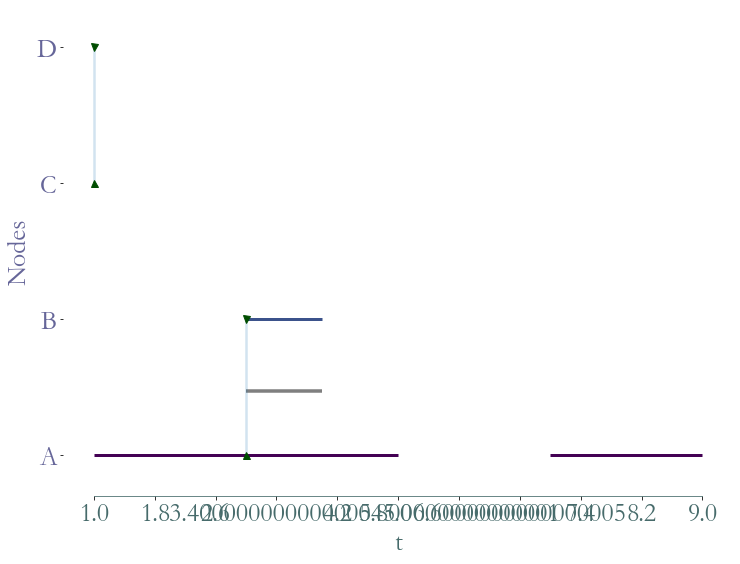[1]:
import matplotlib.pyplot as plt
import straph as sg
[2]:
plt.rcParams["figure.figsize"] = (12,9)
Induced Graphs and Substreams¶
Let’s start by loading an example of a Stream Graph.
[3]:
path_directory = "examples/"
S = sg.read_stream_graph(path_nodes=path_directory + "example_nodes.sg",
path_links=path_directory + "example_links.sg")
S.describe()
_ = S.plot()
Nb of Nodes : 6
Nb of segmented nodes : 11.0
Nb of links : 7
Nb of segmented links : 10.0
Nb of event times : 10
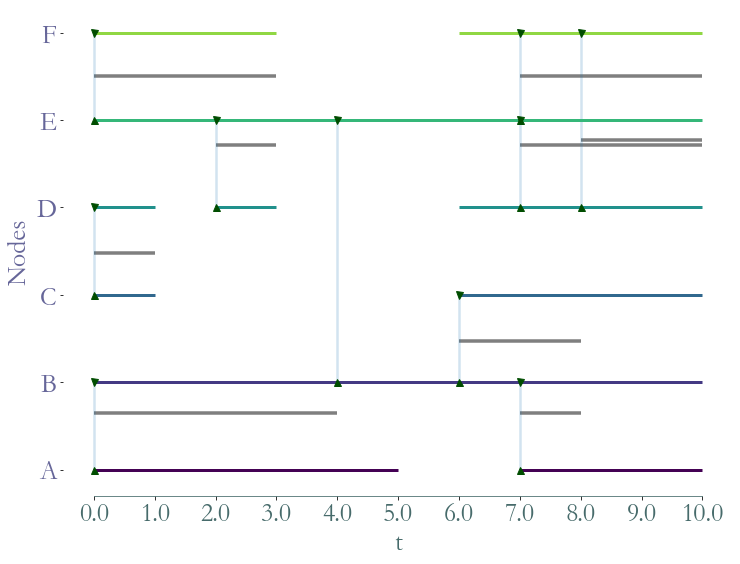
As in graphs, one may want to extract a specific subpart of a stream graph.
## Aggregated Graph
Let’s take a look at the aggregated Stream Graph. We remove all temporal information and aggregate the structural one.
[4]:
a_l = S.aggregated_graph() # This method returns an adjacency list
We can visualise this graph with networkx.
[5]:
_ = S.plot_aggregated_graph()
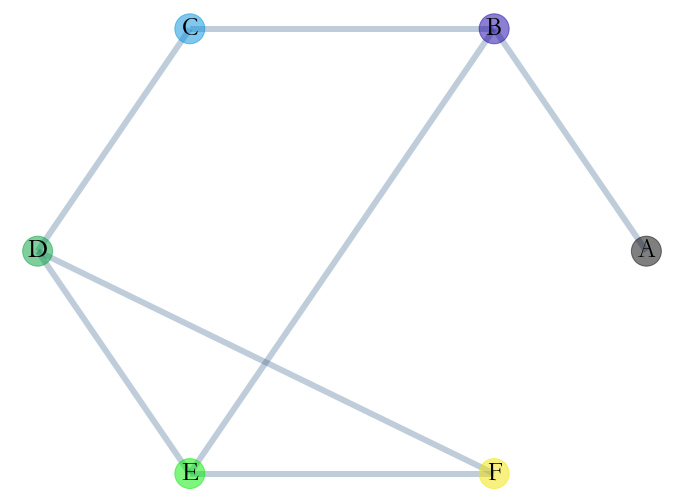
Instant Graph¶
Similarly we can extract the instant graph at any time instant in the initial time windows. For example at instant t=7.0.
[6]:
a_l = S.instant_graph(7) # This method returns an adjacency list
[7]:
_ = S.plot_instant_graph(7)
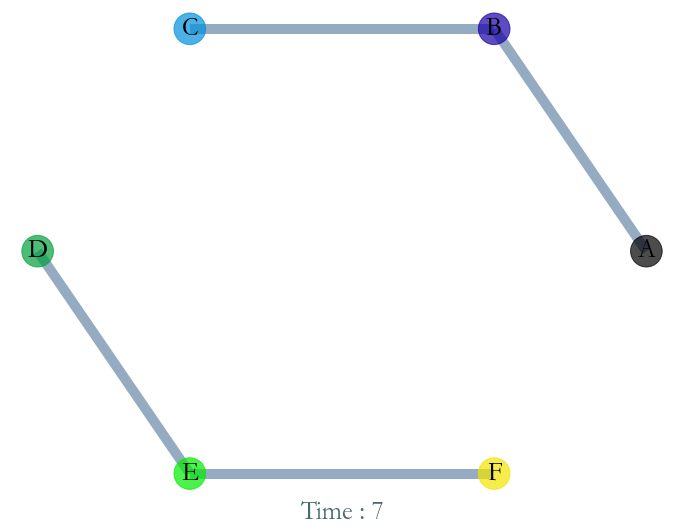
Substreams¶
We define several types of substreams: - substreams based on nodes (or node’s label) - substreams based on links - substreams based on time
### Substreams based on time
We can extract the substream corresponding to a given time windows. For example, we extract the substream between the instant 3 and 7.
[8]:
ss = S.induced_substream_by_time_window([3,7])
_ = ss.plot()
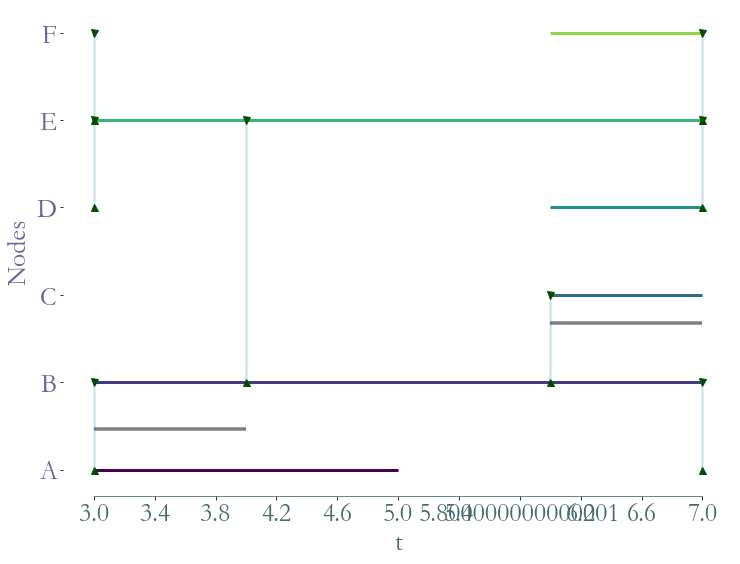
Substreams based on nodes¶
[9]:
# We can filter by nodes or by their label
ss = S.induced_substream_by_nodes([0,1,3,4])
_ = ss.plot()
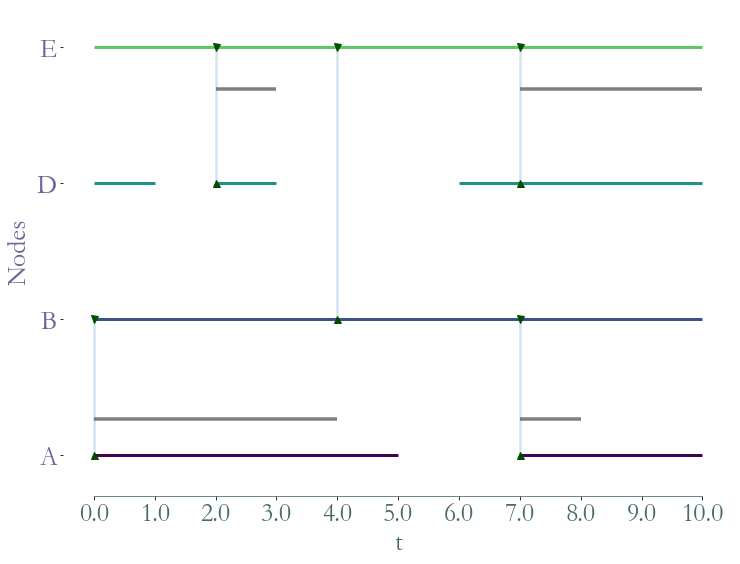
Straph allows to extract a substream by a list of nodes (elements of V).
[10]:
ss = S.induced_substream_by_nodes(['A','B','C'])
_ = ss.plot()
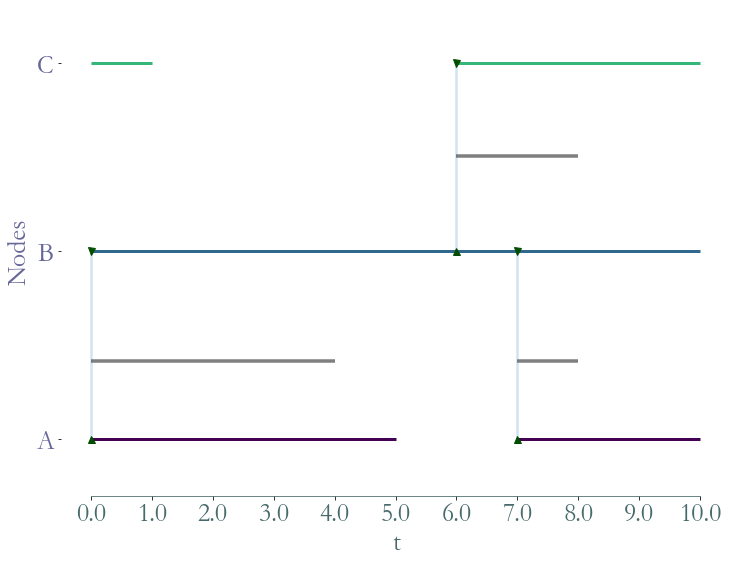
Substreams based on temporal nodes¶
We can also extract a substream with a list of temporal nodes. The function substream takes as a parameter a cluster: a list of temporal nodes (element of W).
[11]:
ss = S.substream([(0,4,0),(0,2,1),(0,1,2),(0,1,3)])
_ = ss.plot()
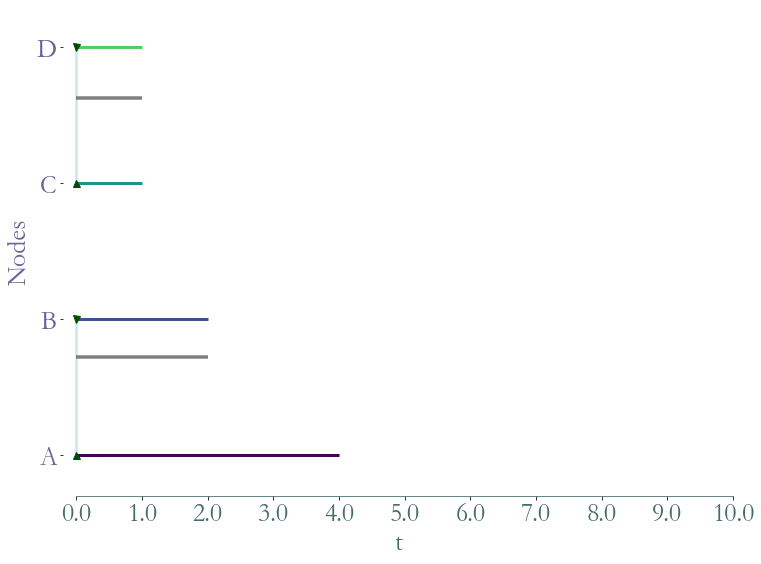
[12]:
ss = S.substream([(1,4,'A'),(1,2,'B'),(0,3,'C'),(0,3,'D')])
_ = ss.plot()
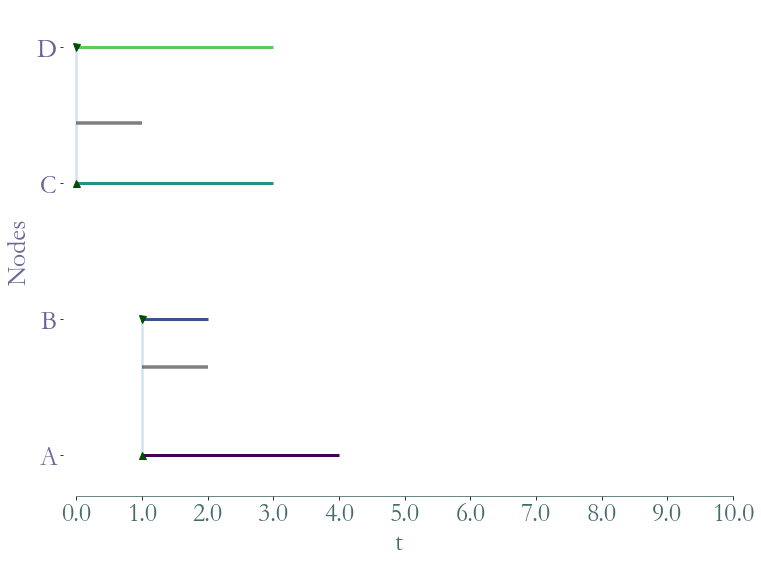
Substreams based on links¶
Likewise we can extract a substream with a list of links (nodes ids or labels).
[13]:
ss = S.induced_substream_by_links([(0,1),(3,4)])
_ = ss.plot()
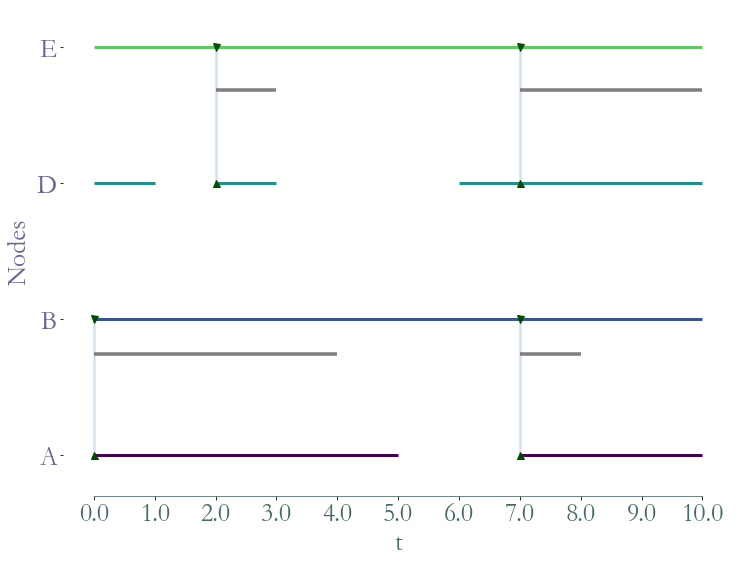
[14]:
ss = S.induced_substream_by_links([('A','B'),('C','D'),('C','E'),('E','D')])
_ = ss.plot()
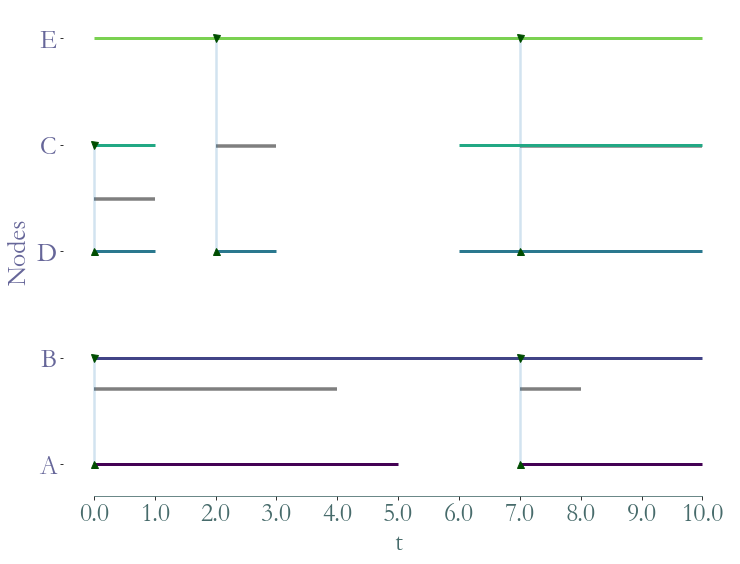
Filtering¶
We can combine previous filters to get a very particular substream. For example if we want
the nodes  and
and  as well as the link
as well as the link  during the time window
during the time window ![[1,9]](../_images/math/efd336cc2de60aeef06934db39daf1e1be2f3912.png) .
.
[15]:
# If we filter by label, we get the reverse index:
label_to_node = {v:k for k,v in S.node_to_label.items()}
# Then we get the whole presence of 'A' and the presence of the link between 'C' and 'D'
prez_A = S.node_presence[label_to_node['A']]
cluster_A = [(t0,t1,'A') for t0,t1 in zip(prez_A[::2],prez_A[1::2])]
for i,l in enumerate(S.links):
if l == (label_to_node['C'],label_to_node['D']) or l == (label_to_node['D'],label_to_node['C']):
prez_CD = S.link_presence[i]
break
cluster_C = [(t0,t1,'C') for t0,t1 in zip(prez_CD[::2],prez_CD[1::2])]
cluster_D = [(t0,t1,'D') for t0,t1 in zip(prez_CD[::2],prez_CD[1::2])]
cluster_B = [(3,4,'B')]
ss = S.substream(cluster_A+cluster_B+cluster_C+cluster_D)
# Filter by the time window:
ss = ss.induced_substream_by_time_window([1,9])
_ = ss.plot()
